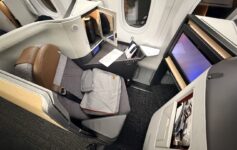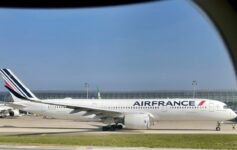Captain Chesley “Sully” Sullenberger III has penned a scathing new op-ed for Baron’s assailing Boeing and the U.S. Federal Aviation Administration.
First, he bemoans that the FAA is understaffed and underfunded. To compensate, he points out that the FAA routinely delegates critical safety tests to aircraft manufacturers like Boeing, which results in a conflict of interest.
For too many years, the FAA has not been provided budgets sufficient to ensure appropriate oversight of a rapidly growing global aviation industry. Staffing has not been adequate for FAA employees to oversee much of the critically important work of validating and approving aircraft certification. Instead, much of the work has been outsourced by designating aircraft manufacturer employees to do the work on behalf of the FAA. This, of course, has created inherent conflicts of interest, when employees working for the company whose products must be certified to meet safety standards are the ones doing much of the work of certifying them. There simply are not nearly enough FAA employees to do this important work in-house.
He doesn’t blame the FAA for deliberate malfeasance. Instead, he argues the FAA has simply not been empowered to do its job. He also argues that career civil servants at the FAA can only do so much when the political appointments over them are not interested in accountability.
Let me be clear, without effective leadership and support from political leaders in the administration, the FAA does not have sufficient independence to be able to do its job, which is to keep air travelers and crews safe. Oversight must mean accountability, or it means nothing.
Boeing Complicit
The bulk of his wrath, however, is reserved for Boeing.
Boeing has focused on trying to protect its product and defend its stance, but the best way, indeed the only way, to really protect one’s brand or product is to protect the people who use it. We must not forget that the basis of business, what makes business possible, is trust.
That’s true only in theory. As I wrote about yesterday, most airlines have nowhere to turn but to Boeing since there is effectively no alternate choice.
> Read More: 737 MAX Customers Have Nowhere Else To Turn But To Boeing…
And there’s pity too. Sullenberger points out that Boeing saved a small amount by cutting safety corners but will pay a high larger amount in terms of damages, canceled orders, and bad publicity from the two 737 MAX 8 crashes.
This case is a validation of something that I have long understood, that there is a strong business case for quality and safety, that it is always better and cheaper to do it right instead of doing it wrong and trying to repair the damage after the fact, and when lives are lost, there is no way to repair the damage. And in this ultra-cost-competitive global aviation industry, when it comes to costs, nothing is more costly than an accident. Nothing.
CONCLUSION
Sullenberger is certainly correct that the relationship between the FAA and Boeing is too cozy. He’s also correct that it seems implausible it has taken Boeing so long after the Lion Air crash to offer a fix for its 737 MAX 8. Still, my question remains did the pilots–in both the Lion Air and Ethiopian flights–disengage autopilot? Without absolving Boeing from any responsibility for what appears to be a design defect, did the pilots just let autopilot bring down the aircraft? Because imagine if Sully had done that over the Hudson…
image: MSNBC (Fair Use Doctrine)





From what I’ve read MCAS only operates when the plane is being flown manually with flaps up. So your auto-pilot question does not apply here.
Sully is correct; the FAA has been lax for decades. In 1979, following the deadliest fatal single commercial aircraft crash in U.S. history (263 passengers and several people on the ground were killed near O’Hare Airport, in May, 1979), involving a DC-10, the FAA was very reluctant to ground the DC-10. It finally did so, but only for a short period. Unfortunately, the FAA did not address all of the potential flying hazards of the DC-10. As a result, 10 years later, in July, 1989, another DC-10, piloted by Capt. Al Haynes, experienced a catastrophic failure, and crashed at the Sioux City Airport, causing over 100 fatalities. If the FAA had been more thorough in 1979, the latter accident might not have occurred.
Also, I’d like to add that following Sully’s successful forced water landing on the Hudson River, in January, 2009, the NTSB recommended to the FAA over 36 safety recommendations, regarding that ditching. The FAA only accepted six of those recommendations. The FAA has a tombstone mentality; that organization needs a good overhaul, from top to bottom.
There is something of an emerging pattern of the way Boeing insinuates itself into some of these cozy relationships. And not just the FAA, but now extending to the Pentagon with the Acting Defense Secretary under an active ethics investigation…whistleblowers complained that the former Boeing senior exec repeatedly lavished praise on Boeing, concurrent with making disparaging remarks about the competition, including during active procurement assessments. Unsurprising.
The best way to drain the swamp is to stuff the swamp with swampy creatures that look like white Republican males that are only interested in lining their pockets.
I hope it will all work out soon. But the same people that voted for this are the anti vaxxers and flat earthers. So ?
I thought Sully looked a bit more like Tom Hanks.
Valid points made, but not really scathing.
From the article in today’s New York Times, it appears that Boeing has taken their cue from the airlines and “un-bundled” various aircraft features, to give their customers a “choice” as the airlines are so quick to phrase it. Safety is now an extra cost option.
Doomed Boeing Jets Lacked 2 Safety Features That Company Sold Only as Extras
https://www.nytimes.com/2019/03/21/business/boeing-safety-features-charge.html?action=click&module=Top%20Stories&pgtype=Homepage
Still looking for a way to blame pilots I see…. Boeing fan or american patriotism or simply paid article, we never knew….
The only way to fly the 737Max safely is to use fatter pilots so they can counterbalance the engines and wings that Boeing place too far backwards.
Btw Garuda has cancelled, more will follow.
Dear Matthew,
I think is a little bit premature to mention this alleged dependence of the pilots on the autopilot function of the airplane.
I believe that we should wait for the official report. I know, it will take months, maybe years but I believe it will be the responsable thing to do and it will avoid unnecessary blame on the pilots. Their families are already devastated with their deaths and now we could cause more pain to them with these allegations.
As far as no other company to go, I believe that US carriers can ask for more planes from the European Airbus or the Brazilian Embraer instead of Boeing.
Best regards.
Shame on Sully. He is a great pilot, no doubt, but he knew nothing about certifying an airplane or accident investigation. May be he should shut up and let the real story unfold instead of adding more conspiracy.
https://www.airlineratings.com/news/crash-expert-greg-feith-slams-critics-737-max-certification-process/
Matthew, you are by no means the only culprit, but in your conclusion you are effectively saying you think the plane is fine and that the pilots are to blame (benefit of the doubt, that might not be what you mean but that is how it reads). Do you know something we don’t?
I have to agree with James. I think it’s pretty awful to be trying to absolve Boeing and blame the pilots. Maybe they are the ones at fault – but we should wait for the investigation to conclude before signing blame. Think how the family of the pilot must feel reading all these online articles about how the plane crash was all the pilots fault!
You have influence and people take note of what you write – opinion is fine but when covering a story like this, given your influence, you have an ethical responsibility in how you cover it. You need to do better.
To be clear, I don’t know the answer but slow for the fact that it could be pilot error, it could simply be a design defect, or it could be both.
There is no doubt it is Boeing’s fault, they decided not to tell the pilots about MCAS and instead tell them the MAX flies the same as the NG.
They do not fly the same.
The NG can pitch up higher than the MAX due to how the engines are mounted. After a certain attitude the MAX wants to keep pitching upwards, which is what MCAS is there to prevent. So the pilots, not knowing any better, climbed out at an attitude they thought was safe, when MCAS tried to level the plane off, the pilots didn’t understand why so they fought it, causing the crashes.
Had Boeing told them about MCAS and told the airlines to train them on it, these crashes would not have happened.
Be it a plane crash in Ethiopia, a reactor meltdown in Japan or a financial crash in NY, the problem is the same; regulatory capture. It is the eternal conflict between Profit and Right.
Agreed with Aztec, MCAS only kicks in when flying under manual mode. So, this isn’t a case of autopilot bringing down the planes. Rather, it appears that these were cases when pilots became startled when their “routine” did not work as intended and then did not know how to properly troubleshoot the problems on hand.
Whether a plane crashes in Ethiopia, a nuclear reactor melts in Japan or the Stock Market crashes in NY, there has been a trend toward regulatory capture in the US and Worldwide. In many countries like Ethiopia regulations are very weak to begin with.
There is no suggestion anywhere that Ethiopian Airlines falls short on procedures or regulations. They are actually Africa’s most respected and successful airline flying a very up to date fleet.
After the 787 launch complete with spontaneous fires and the 7M8 and crashes, I won’t be hurrying to board a 777NG until it has been in service for at least five years. For me, Boeing and the FAA lack credibility and I don’t want to trust either with my life.